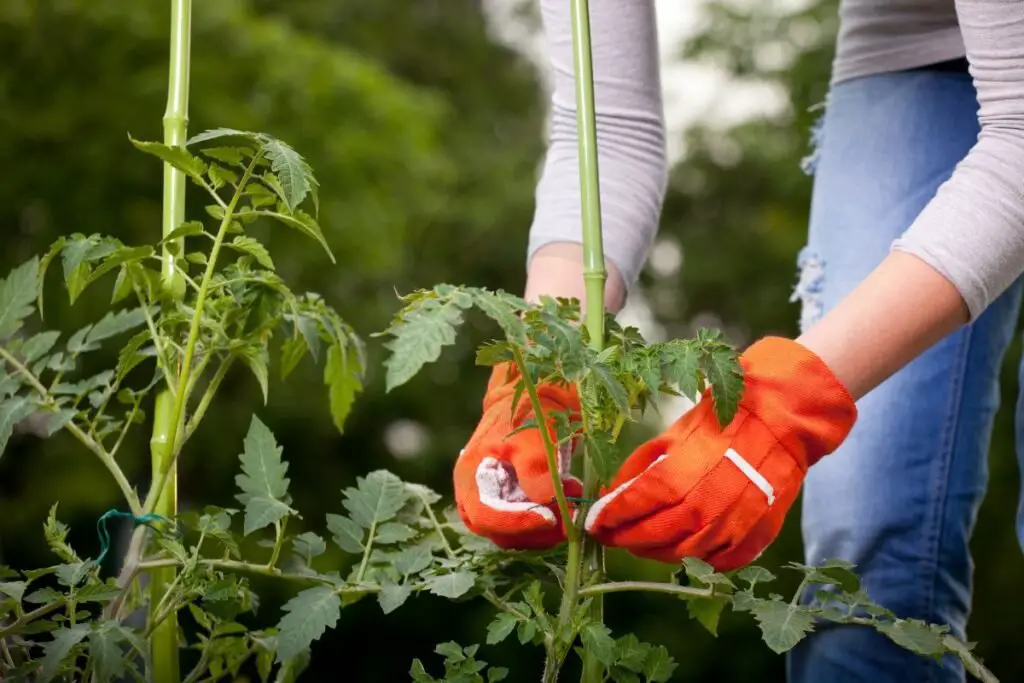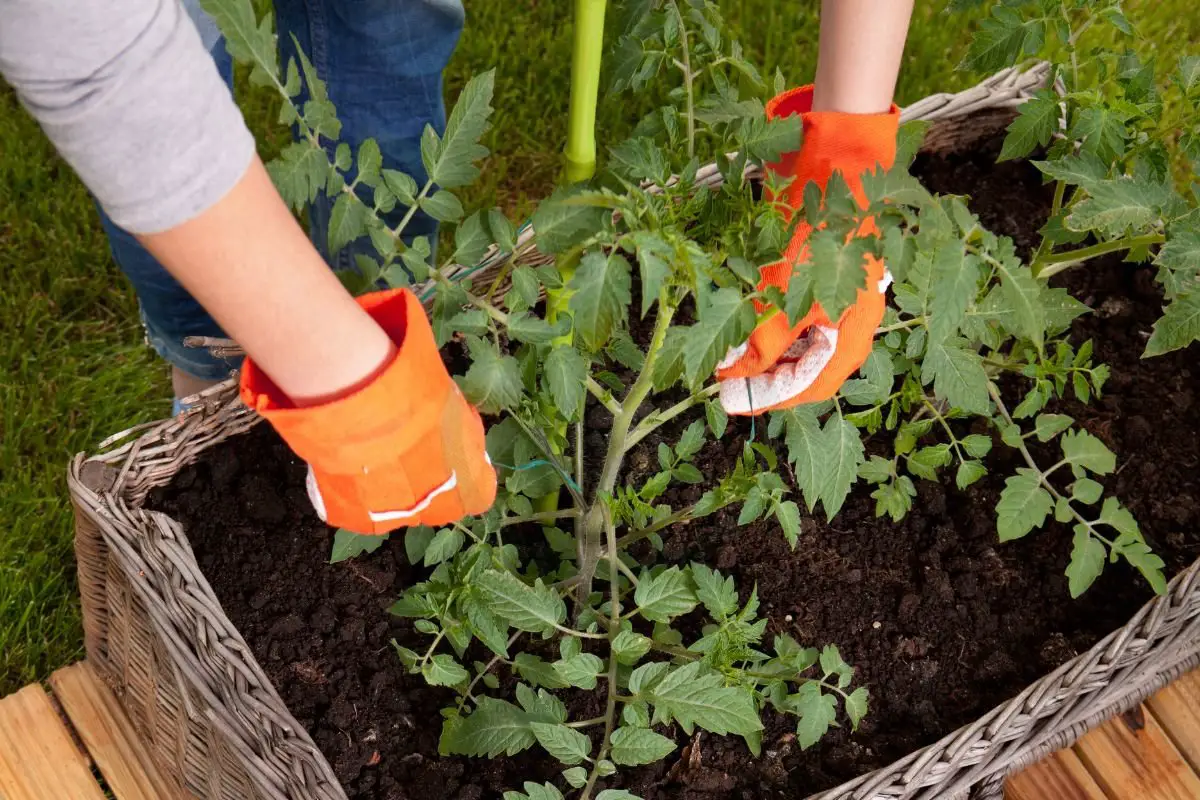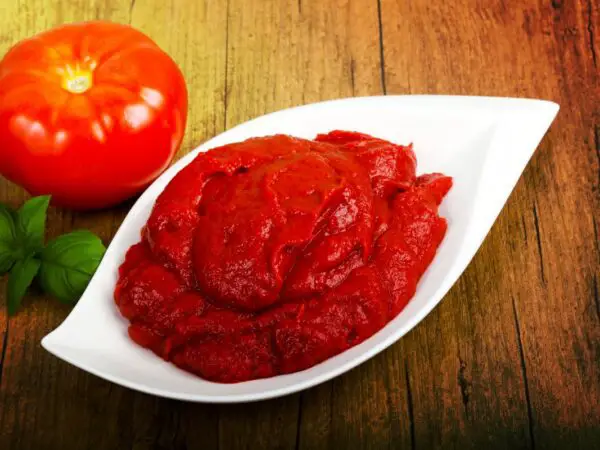Did you know that planting and using the right staking techniques, like end stake and managing side shoots, can significantly boost your tomato plant's yield in a home garden? Discover how to support your plants effectively and maximize your harvest with these expert tips.
- Learn the best methods for staking tomato plants
- Find out how to choose the right support materials
- Explore step-by-step instructions for proper plant staking
Ready to elevate your gardening game and enjoy a bountiful tomato harvest? Stay tuned as we delve deeper into the world of tomato plant staking techniques. Master this essential skill and watch your garden thrive like never before.
Key Takeaways
- Stake your tomato plants to provide support and prevent them from bending or breaking under the weight of the fruit.
- Choose the right type of stake based on the size and growth habit of your tomato plant to ensure proper support.
- Secure the stems gently but firmly to the stakes using soft ties to avoid damaging the plant.
- Prune your tomato plants regularly to promote airflow and reduce the risk of diseases, aiding in their overall support.
- Follow specific staking techniques for determinate and indeterminate tomato varieties to maximize plant growth and fruit production.
- Regular maintenance, including checking ties and adjusting stakes as needed, is essential for successful tomato plant staking.
Why Stake Tomatoes
Support Growth
Staking tomatoes encourages vertical growth, leading to healthier plants overall. By training tomato vines to grow upwards, you assist in their development. This method also results in stronger stems and increased fruit production.
Optimize Space
Staking tomatoes allows you to utilize vertical space efficiently within your garden. With this technique, you can maximize the number of tomato plants in a limited area. Staked tomatoes help create a neat and organized layout in your garden.
Enhance Airflow
By staking tomatoes, you can improve air circulation around the plants, which is crucial for preventing diseases. Proper spacing achieved through staking helps reduce humidity levels, benefiting plant health. Overall, better airflow enhances the vitality of tomato plants.
Prevent Diseases
Staking tomatoes plays a vital role in minimizing the risk of fungal diseases, as it keeps the plants off the ground. This method also helps in preventing soil-borne diseases that may affect tomato plants. Through proper staking techniques, you can significantly reduce the chances of issues like fruit rot and pest infestations.
Types of Tomatoes
Determinate Tomatoes
Determinate tomatoes have a compact growth habit, reaching a predetermined height before setting fruit. These plants are ideal for smaller spaces and containers due to their limited size. Staking determinate tomatoes is crucial to support their heavy fruit loads and prevent breakage.
When staking determinate tomato varieties, opt for cage supports or single stakes to provide adequate stability. These methods help in maintaining the plant's upright position and facilitate better air circulation around the foliage, reducing the risk of diseases. By staking determinate tomatoes, you ensure that the fruits remain off the ground, minimizing rotting and pest damage.
Indeterminate Tomatoes
Indeterminate tomatoes exhibit continuous growth, producing fruit throughout the season until frost sets in. These plants require sturdy support structures as they can grow tall and sprawling. Selecting suitable staking techniques such as tomato cages or trellises is essential for preventing the vines from bending or breaking under the weight of the fruit.
Staking indeterminate tomatoes not only aids in keeping the plant upright but also promotes efficient nutrient uptake and sunlight exposure for optimal photosynthesis. By providing proper support, you enable indeterminate tomatoes to develop a strong root system and robust stems, leading to increased yields of flavorful fruits.
Choosing Stakes
Stake Materials
When selecting stakes for tomato plants, explore various material options such as wooden and plastic. Compare the pros and cons of each type. Wooden stakes offer natural aesthetics but may rot over time. Plastic stakes are durable but lack the rustic charm of wood. Consider durability and flexibility to ensure long-lasting support for your tomato plants.
- Wooden Stakes
- Natural appearance
- Prone to rotting in wet conditions
- Plastic Stakes
- Durable and weather-resistant
- Lack the aesthetic appeal of wood
Size Matters
For effective support, choose stakes that are the right height and thickness. Ensure they are tall enough to accommodate the growth of tomato plants. Opt for sturdy stakes capable of withstanding the weight of mature tomato vines.
- Select stakes based on plant height
- Ensure stakes are thick enough for stability
Durability Considerations
Evaluate stake materials based on their longevity and ability to withstand outdoor conditions. Opt for high-quality, durable stakes to avoid frequent replacements and provide continuous support to your growing tomato plants.
- Longevity of stake materials
- Withstand outdoor elements effectively
Staking Techniques

Florida Weave
Implement the Florida weave technique by using stakes and twine to create a supportive structure for tomato plants. This method involves weaving the twine between plants in a crisscross pattern to provide stability. The benefits of the Florida weave include efficient support for heavy fruit-laden branches and improved air circulation, reducing the risk of diseases.
To set up the Florida weave system, start by driving stakes into the ground at each end of the row of tomato plants. Then, run a length of twine along one side of the row, looping it around each stake as you go. Continue weaving the twine back and forth between plants, creating a secure network of support as the plants grow taller.
Single Stake
Driving Stakes
When using a single stake for staking tomato plants, ensure you drive it into the ground at least 6-8 inches deep to provide adequate support. Position stakes approximately 1-2 inches away from the base of each plant to avoid damaging roots while still anchoring them securely. Firmly drive stakes into the soil to prevent wobbling or tipping over.
Securing Stems
To secure tomato plant stems effectively, gently tie them to stakes using soft materials like fabric strips. Avoid using materials that can cut into stems or restrict growth. Tie stems at regular intervals along the stake's height to distribute weight evenly and prevent bending under fruit load.
Double Stake
Setup Process
For double staking, place two stakes on either side of a tomato plant and secure them with horizontal bars or ties for added support. Begin by positioning one stake on each side of the plant before attaching crossbars or tying them together near the top. This setup ensures stability and prevents toppling during windy conditions.
Pruning Suckers
Identify and remove suckers - small shoots that grow in leaf axils - regularly to maintain plant vigor and focus energy on fruit production rather than excessive foliage growth. By trimming away suckers, you encourage stronger main stem development, leading to healthier overall plant growth and increased fruit yield.
Secure the Stems
Tying Methods
Experiment with different tying techniques to secure tomato plant stems effectively. Utilize methods like the figure-eight tie or the Florida weave for added stability. Ensure the ties are snug but not too tight to avoid damaging the main stem.
Consider using materials such as soft twine, garden tape, or stretchy ties for securing tomato plants. These options provide flexibility and gentle support while allowing room for growth. Avoid using harsh materials that can cut into the plant's stem.
Mastering the art of tying stems to stakes is crucial for ensuring proper growth and preventing damage. Practice makes perfect; try out various techniques until you find one that works best for your specific plant. Remember, a well-secured stem leads to a healthy and productive tomato plant.
Material Choices
When selecting tying materials for tomato plants, weigh the pros and cons of each option available. Fabric strips offer gentle support and are biodegradable, making them an eco-friendly choice. However, they may degrade faster than other materials.
Vinyl ties provide durable support and are reusable, ideal for long-term use in your garden. They offer sturdy reinforcement but may be less flexible than other options available. Consider ease of use alongside durability when choosing tying materials.
Evaluate additional options like rubber bands or plastic clips for securing tomato plant stems. Each material has its benefits; rubber bands are inexpensive but may constrict growth if not adjusted regularly. Plastic clips offer convenience but may require replacement over time.
Pruning for Support
Identify Suckers
Suckers on tomato plants are secondary stems that grow between the main stem and branches. Differentiate them by their smaller size and distinct leaf pattern. Recognize suckers early to prevent overcrowding.
Knowing when to prune suckers is crucial for plant health. Regularly inspect your tomato plants to identify these growths promptly. By removing suckers at the right time, you ensure proper air circulation around the plant.
To promote robust growth, it's essential to remove suckers while they are still young. Early removal directs the plant's energy towards fruit production instead of unnecessary growth. Keep an eye out for new suckers as your plant matures.
Timing Pruning
Pruning should be done when suckers are small and easy to pinch off. Avoid waiting too long, as larger suckers can damage the main stem if not removed promptly. Regular pruning sessions help maintain plant vigor.
Ensure you prune suckers during the early stages of growth to prevent stress on the plant. Wait until they are 2-4 inches long for optimal removal without harming the plant. Consistent pruning encourages better fruit development.
Determinate Staking Guide
Gather Stakes
Collect an adequate number of stakes for all your tomato plants. Ensure stakes are clean and undamaged. Organize them for the staking process.
Drive Stakes
Drive stakes into the ground at the correct depth for stability. Position them strategically to support tomato plants well. Use a mallet or hammer to secure stakes firmly.
Secure Stems
Secure tomato plant stems to stakes using appropriate ties. Wrap stems gently to avoid damage. Regularly check tie tightness to prevent stem injuries.
Indeterminate Staking Guide
Choose Stakes Wisely
When selecting stakes for your tomato plants, consider their specific needs and growth habits. Opt for stakes that match the size of your tomatoes and are durable enough to support their weight.
- Ensure the stakes complement the growth habits of your tomatoes.
- Select strong and durable stakes to withstand the plant's weight.
Effective Driving
Drive stakes into the ground carefully and vertically to provide optimal support. Take care not to damage the plant roots during this process.
- Drive stakes with precision into the ground.
- Insert stakes vertically for adequate support.
Stem Security Tips
Securely attach tomato plant stems to stakes using soft materials to prevent any abrasions. Regularly monitor the stem security to avoid slippage or damage.
- Use soft materials for tying stems securely.
- Monitor stem security regularly to prevent slippage.
Maintenance Tips
Regular Checks
Schedule routine inspections to ensure stake stability. Check ties and stems for wear or damage. Maintain tomato plants well-supported with regular maintenance.
Adjust Ties
Make necessary adjustments to ties as plants grow. Loosen or tighten ties for stem expansion. Monitor tie positions to avoid constricting growth.
Additional Pruning
Explore advanced techniques for enhancing plant growth. Consider selective pruning to improve fruit quality and yield. Seek professional advice for specialized practices.
Final Remarks
You've learned why staking tomatoes is vital, the types of tomatoes that benefit from staking, and various techniques to ensure your plants thrive. Choosing the right stakes, securing stems, and proper pruning are essential for healthy tomato growth. Whether you have determinate or indeterminate varieties, following the staking guides provided will set you up for a bountiful harvest. Remember to maintain your staked tomatoes regularly for optimal results.
Now it's time to get out there and stake those tomato plants! Implement the techniques you've discovered to support your tomatoes effectively. Share your newfound knowledge with other gardening enthusiasts and watch your tomato plants flourish. Happy gardening!
Frequently Asked Questions
How do I choose the right stakes for my tomato plants?
When choosing stakes for your tomato plants, consider the height and weight of the plant. Opt for sturdy materials like wood or metal. Ensure the stakes are at least 6 feet tall to support indeterminate varieties. Drive the stakes deep into the ground near each plant for stability.
Can I stake both determinate and indeterminate tomato plants using the same technique?
Yes, you can stake both determinate and indeterminate tomato plants using similar techniques such as tying them to stakes as they grow. However, indeterminate varieties might require taller and sturdier stakes due to their continuous growth and heavier fruit load.
Is pruning necessary when staking tomato plants?
Pruning tomato plants is essential when staking them to ensure proper airflow, reduce disease risk, and promote fruit production. Remove lower leaves regularly to prevent soil-borne pathogens from splashing onto the plant. Prune suckers that grow in leaf axils to direct energy towards fruiting.
What are the benefits of staking tomatoes?
Staking tomatoes help improve air circulation around plants, reduce pest damage by keeping fruits off the ground, make harvesting easier, prevent diseases caused by soil contact, and support heavy branches laden with ripening fruit. Staked tomatoes also tend to ripen more evenly due to better sun exposure.
How often should I check and adjust my tomato plant staking setup?
Regularly inspect your tomato plant staking setup every 1-2 weeks during the growing season. Check for any signs of leaning or instability in the plants and adjust ties or supports as needed. Keeping a close eye on your staked tomatoes ensures they grow upright and healthy throughout the season.
Image Source: Paid image from CANVA



